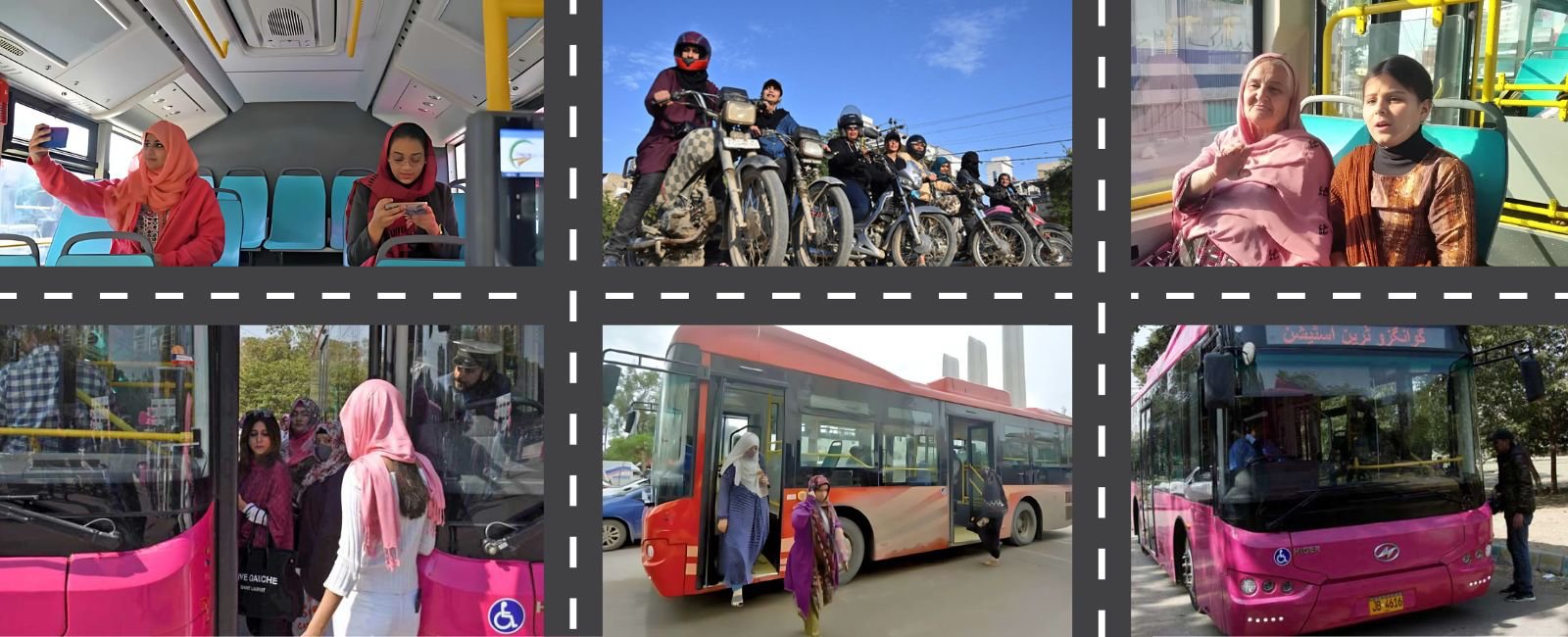How ogling, insults, and fear travel with Karachi's women commuters
Women’s safety in public transport extends to protecting their belongings, with pickpocketing as well as mugging a constant threat

As I stare out the glass door of the Red Bus, more women squeeze in from the other side, pressing me against it. A grim realisation sinks in at 8am: Karachi is not designed for women. Each day, countless women like me endure overcrowded, unreliable public transport, risking discomfort and safety to reach our destinations. The city's infrastructure reflects indifference to our realities.
Yet, we press on, tolerating the pushing and shoving as normal, telling ourselves, "Just one more stop". While everyone in Karachi struggles with its declining quality of life, women bear the brunt twice over due to societal refusal to grant equal access to public spaces.
Arisha, a 27-year-old customer service representative, working in the same office as her husband, highlights the contrast in their commuting experiences.
"We travel separately because we work different shifts," she tells Geo.tv. "It takes me two hours in the morning and three in the evening. While my husband gets to work in 40 minutes."
Similarly, 19-year-old Hina describes feeling "like a target" as she transitions between Qingqi rickshaws to reach university. "I try to ignore [the stares]," she shares. "But every day, I commute with my heart in my throat."
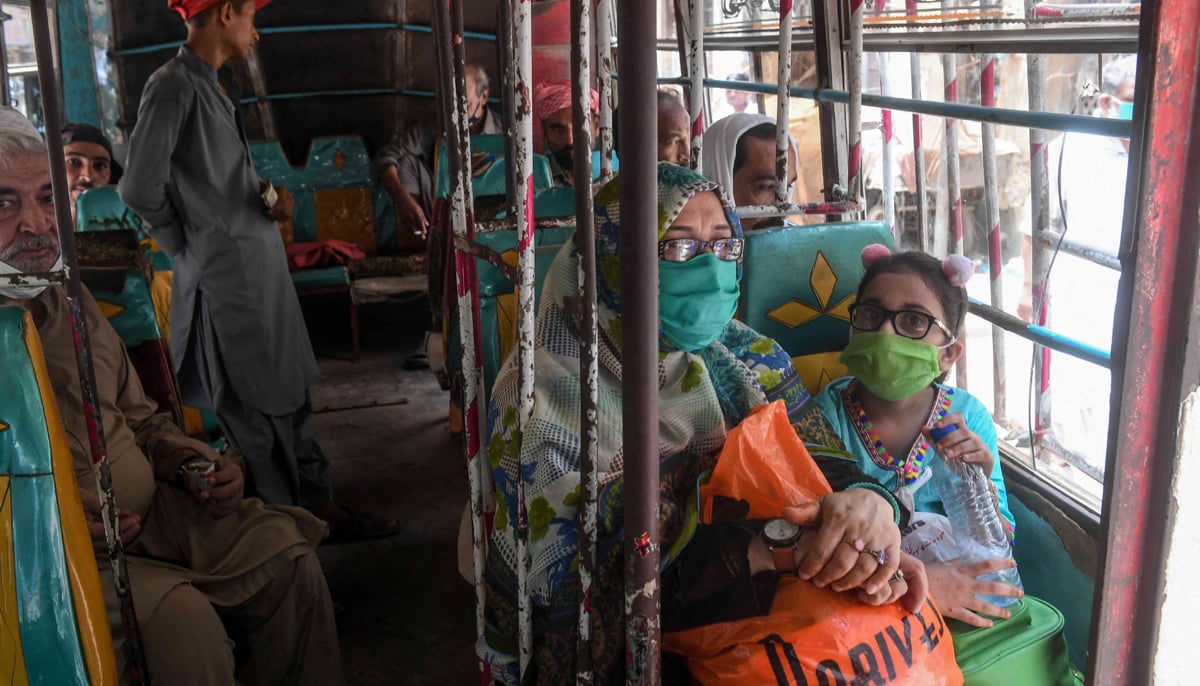
No, you do not get to tell me that we have evolved and the concept of working women has been normalised — because I don't see it. Not in men’s eyes on me, buses allotting less space for women, a biker tailing my rickshaw, or the justifications I make for being out alone, how I clutch my bag a little tighter, counting my steps as I make it home.
Forty-year-old Nargis, who works as housekeeping staff at a school, endures a gruelling daily commute that requires her to switch between three buses. Her journey is marked not only by safety concerns but also by the indifference and lack of empathy she faces from fellow passengers.
Even in the women's section, men intrude, standing nearby, staring, or brushing against me. I feel so vulnerable, with no one to protect us, no sense of security," she shares.
This is not an exaggeration; this is the reality we face daily. This city, my Karachi, where I was born and bred just like any other man out there, makes me feel like an intruder in our own space.
Inconvenience of system and safety concerns
Hifsa, 28, with photophobia and myopia, relies on public buses despite her chronically ill mother’s cervical pain worsening from rash driving.
While alternatives may seem ideal, Mahjabeen, 26, insists she’d rather “suffer through an hour of commuting on [public bus] than spend half her salary on private transport.”
When a woman steps out of the house, one would think she would feel safer in an enclosed space like that of a small passenger vehicle.
Ayesha Rehan, a 22-year-old bachelor's student at Bahria University, disagrees.
"I've had experiences of inappropriate behaviours by rickshaw drivers. Sometimes they deliberately take wrong turns even when I clearly explain them the route," she shares. "They stare at me throughout the ride and make me uncomfortable."
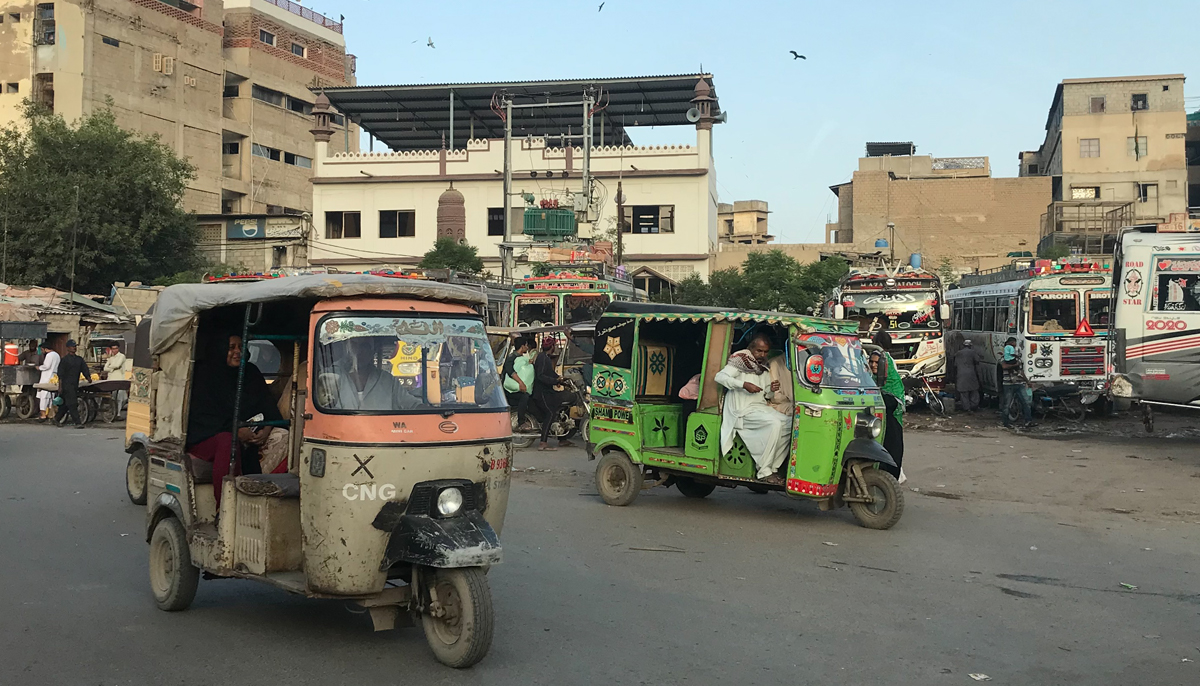
For Hifsa, a rickshaw is still a safer choice, because in case of danger, she says, one is "able to jump out of it".
Shehnaz, 32, doesn’t have the luxury of avoiding public transport after dark, as she ends her work day as a domestic worker after 9pm. "The fear of being attacked or harassed is always looming on my mind. I've also seen women being groped or pushed around, and no one steps up to help. We're left to fend for ourselves," she says.
Women’s safety in public transport extends to protecting their belongings, with pickpocketing as well as mugging a constant threat. Ayesha recalls her phone being stolen in a Qingqi rickshaw by burka-clad women targeting commuters. Regardless of their background, every passenger experiences a lump in their throat, flinching instinctively with a fight-or-flight response when someone sits nearby.
Poor infrastructure
Women must also make do with the poor conditions of bus stops and erratic route schedules should they decide to step out in pursuit of the same economic benefits they contribute to.
Broken roads and traffic jams are tales often told, yet they continue to rain on the parade of the exhausted locals. "On days of protests or annual processions by different sects, I either have to take a leave or take a longer route to get to work," Arisha says. "Sometimes, I don't get home until nearly midnight, leaving me no time for anything else."
The lack of maintenance of buses and negligence of the drivers doesn’t care for the repercussions on its passengers. Shehnaz faces delays that draw her employers’ ire, but she can’t afford alternatives like rickshaws. "It's like working just to pay for the ride," she sighs.
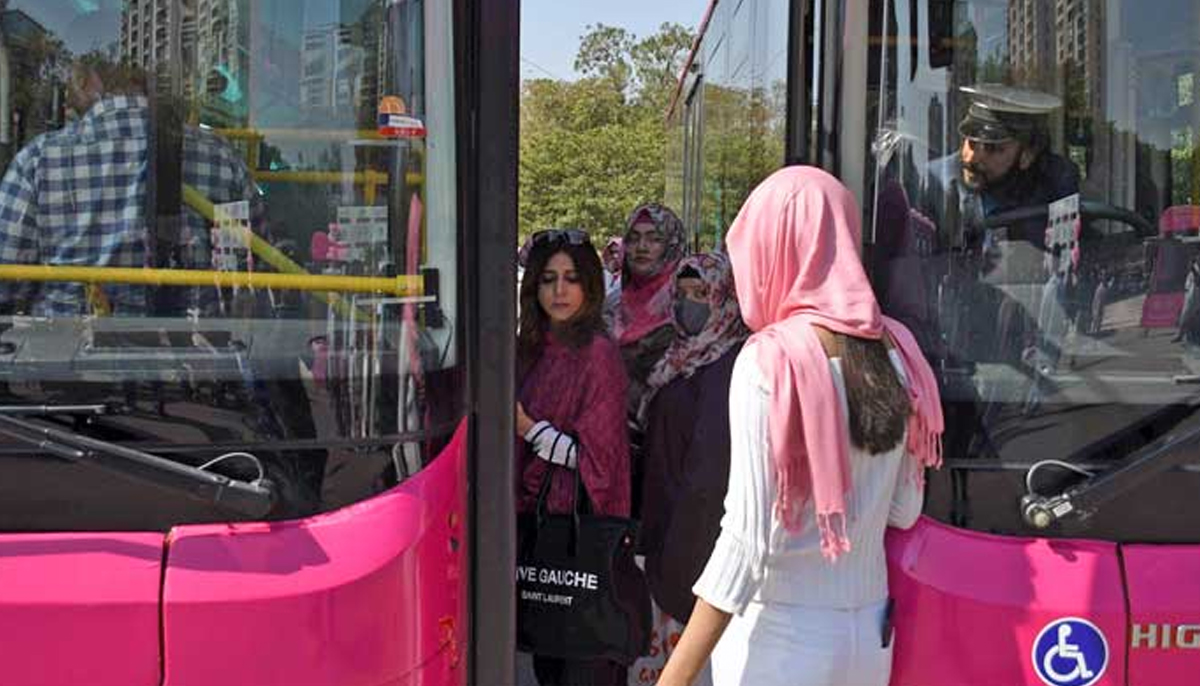
The women I spoke to testified to having missed out on work opportunities due to either no conveyance offered by the organisation or stepping back after exhausting hefty charges in carpooling options.
"One time our bus broke down in the middle of the road and the driver made us wait for an hour for another [bus]. But he refused to return us the fare and even misbehaved with us," Mahjabeen narrates.
Besides pay cuts, physical injuries are also a harsh consequence. “I twisted my ankle jumping off a bus that wouldn’t stop properly,” recounts Nargis, who lost a week’s wages as a result.
Private alternatives
The unreliability of public transport has pushed some women toward ride-hailing services or private vans, but these options come with their challenges.
Tasmia, 28, a teacher, recalls the entitlement of her van driver, who prioritised students over staff. "[He] would leave me at school if we stayed late and refused to pick me up as I was the only teacher needing transport.” She has since switched to a monthly rickshaw for the commute.
For women like Nargis, who bear the hostilities of public transport to save an extra penny, opting for ride-hailing services is a pipe dream.
"I would rather walk," she asserts.
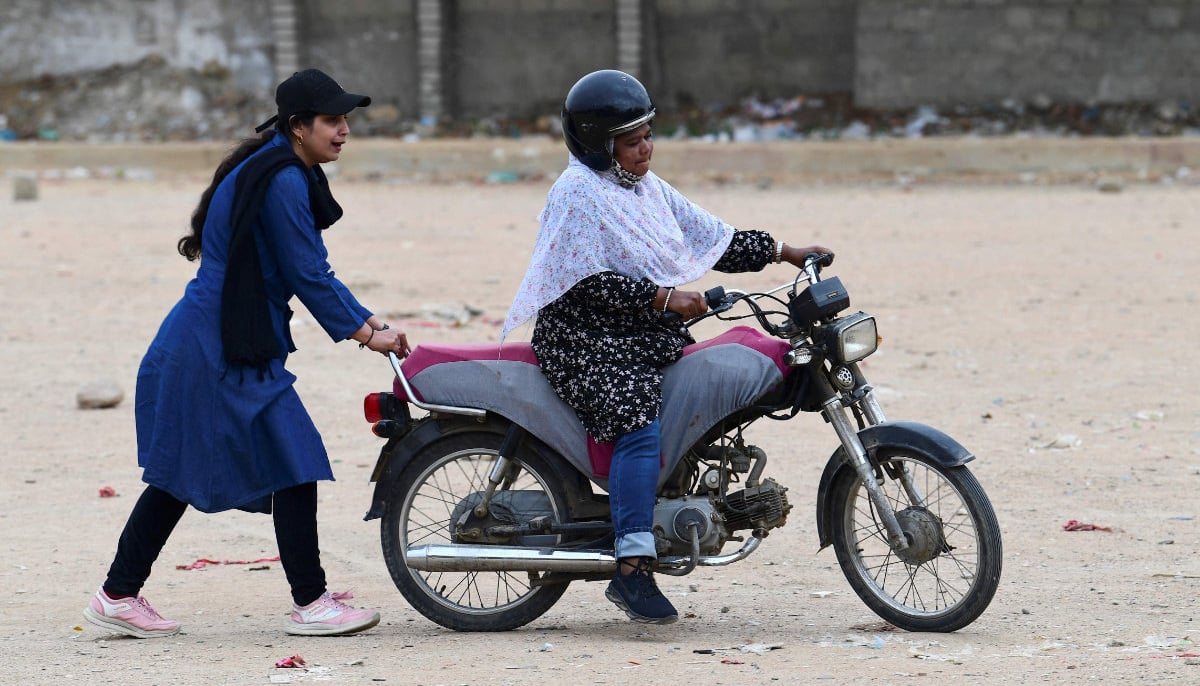
The bike option in these apps is usually a no-go for women due to the reluctance of both the passenger and the rider. Payyam-e-Khurram has addressed this gap through a unique initiative, Pink Riders Pakistan. Since 2018, the bike-training institute has trained over 10,000 women, empowering them with mobility and independence.
Khurram believes that true women's empowerment lies in ensuring they stand on equal footing with men, carrying the same confidence and autonomy.
Besides opening up new job opportunities for women, he explains how this initiative has also brought value to their families. "Women who are mobile and independent are not afraid to take risks," he shares.
Urban expert insights
Architect Nabah Ali Saad — an academic and co-founder of a research collective, Praxis Urbanism — contrasts the two cities, blaming politics for Karachi’s systemic distress.
"I keep hearing that Karachiites are resilient people, and we rise to the challenge," she says, arguing that resilience is stretched thin. “[It] can only sustain you for so long.”
She criticises policymakers for neglecting cultural contexts in designing transport systems. Excuses like budget constraints and mafia interference persist, but Nabah emphasises the need for dialogue to address these issues.
"The more women present in public spaces, the fewer issues we’ll see," she explains, highlighting Jane Jacobs’ urban theory, eyes on the street. Rather than restricting women's mobility, cities must create spaces catering to their needs. Domestic workers, often overlooked in transport research, must be recognised. "Women are travelling across Karachi —from Korangi to Defence Housing Authority. Why haven’t we expanded Pink Bus and other female-centric services to regular routes?” she asks.
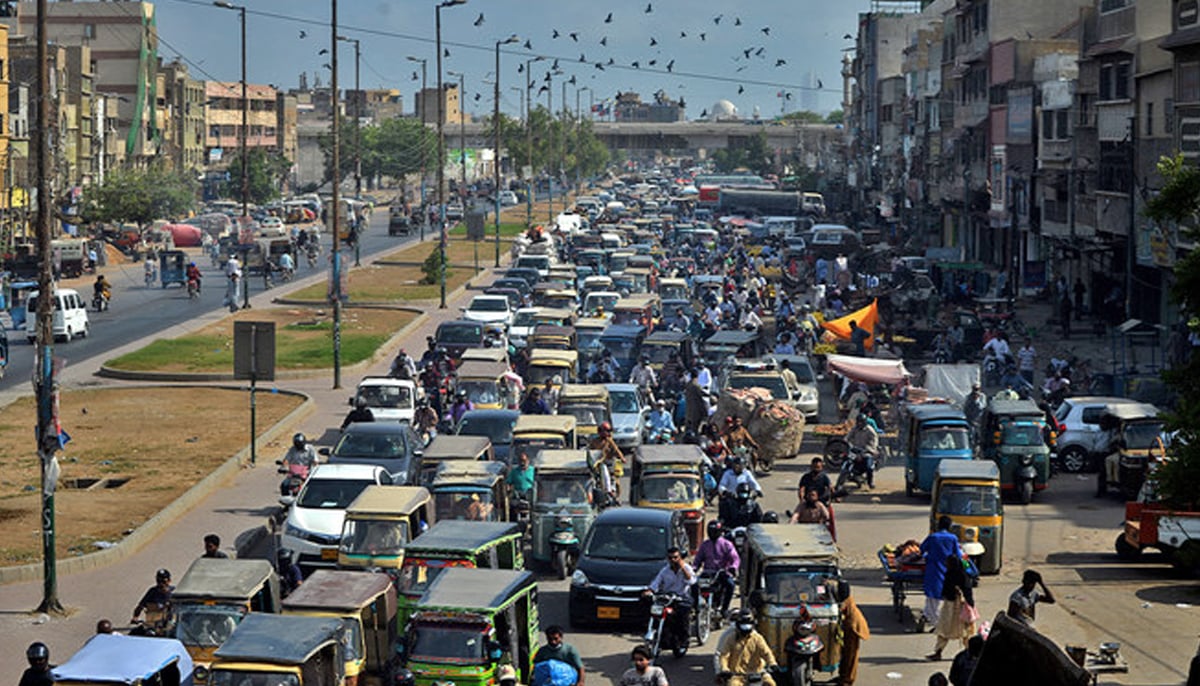
Affordability of a resource remains a pressing concern for these women, who change multiple buses to get to their destinations. The urban expert calls for formalising rickshaws and motorcycle rickshaws under public jurisdiction to improve affordability and safety.
Using public transport for commute for as long as I can remember and walking down the street during what is perceived as the 'after-hours’ for a woman in a public place, it is impossible to brush off the weight of men’s eyes, carrying overt rejection and exhortation that I am not supposed to be here.
The profound lack of walkability is what defines Karachi as a "failed city”, according to Nabah, a phenomenon consistently neglected by those responsible, leading to the worsening of the urban living experience.
Nabah stresses the need to foster civic sense among people that allows women to feel comfortable in public spaces. "You can't just tell [women] to come out on the streets and everything will be fine. You have to design those spaces for them to reinforce that sense of security," she says.
What the government says?
The importance of planning gender-sensitive infrastructure has been highlighted enough, however, it begs the question: how is the government addressing these challenges? Public transportation initiatives in Karachi, spearheaded by departments like the Sindh Transport and Mass Transit Authority, offer a glimpse into the state's priorities and limitations.
While its Public Transport Improvement Programme has been a blessing for most women, its current structure does not offer a more centralised coverage across Karachi, leading to confusion with navigating routes, particularly for those living in more remote or underserved areas.
Managing Director SMTA Kamal Dayo estimates the city needs 5,000–6,000 buses but currently has only 305. He attributes delays in expansion to funding issues and the lack of an integrated system. Future projects, including BRT lines, promise improvement but remain years away.
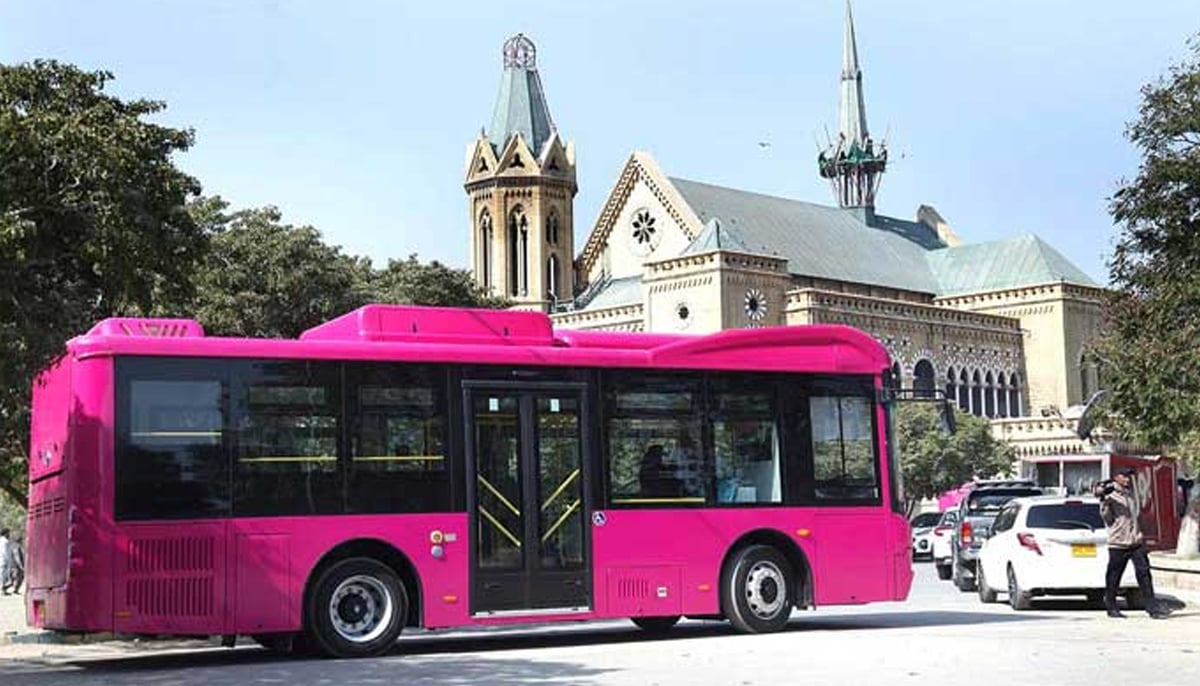
To address harassment concerns, he introduces me to their command-and-control center, featuring a large screen displaying live camera monitoring and map navigation of the active Red Buses in Karachi. He also emphasises measures like the inclusion of toll-free complaint numbers and helpline details on every bus.
Moreover, the government isn’t indifferent to implementing reforms to promote more women in public as Dayo tells me about a project to enhance driving skills among women and transgenders for operating heavy transport vehicles (buses, trucks, trailers, and cranes). However, they ended up suffering a loss as “most women withdrew from jobs after completing training due to societal pressures,” admits Dayo.
Hence, the lack of motivation for the government to introduce female-centric initiatives regarding their mobility is somewhat understandable. However, this does not absolve them of responsibility, nor does it diminish women's existing rights to more accessible and inclusive public transport options.
There needs to be careful thought and planning to address the barriers by working with communities and running campaigns advocating for equal access to public spaces for all genders. Policies should be in place to provide better support for women's mobility without compromising cultural values. Public places should be designed to empower women with more equitable access to opportunities, especially in urban spaces like Karachi. And maybe then we could proclaim ourselves to be a progressive city.
Bazigah Murad is a journalist passionate about uncovering societal issues, cultural dynamics, and the nuanced portrayal of women in South Asia. She can be reached via email: [email protected]
Header and thumbnail image via Geo.tv



